目录
1.前言:
2.vuex的基础用法:
1.构建与挂载vue
基础模板渲染
构建仓库
2.mutations的使用
1.介绍
编辑
2.案列:
3.传参
4.辅助函数mapMutations:
3.module分对象的写法
介绍
建立模块:
访问数据的方式:
介绍
直接访问
模块导入访问
关于getters/setter
1.前言:
vuex相当于储存在页面后台的数据库。可以供全部组件访问到,相当于全局变量。便于多层级的
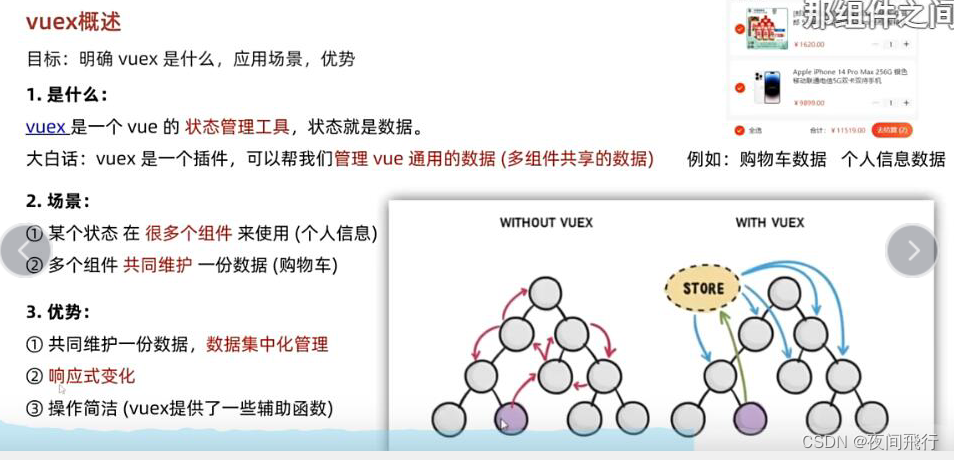
2.vuex的基础用法:
1.构建与挂载vue
基础模板渲染
注意:文件存放的位置。

<template><div class="box"><h2>Son1 子组件</h2>从vuex中获取的值: <label>1</label><br><!-- <button @click="handleAdd(1)">值 + 1</button><button @click="handleAdd(5)">值 + 5</button><button @click="handleAdd(10)">值 + 10</button><button @click="handleChange">一秒后修改成666</button><button @click="changeFn">改标题</button> --></div>
</template><script>
export default {name: 'Son1Com'
}
</script><style lang="css" scoped>
.box{border: 3px solid #ccc;width: 400px;padding: 10px;margin: 20px;
}
h2 {margin-top: 10px;
}
</style>
<template><div class="box"><h2>Son2 子组件</h2>从vuex中获取的值:<label>1</label><br /><!-- <button @click="subCount(1)">值 - 1</button><button @click="subCount(5)">值 - 5</button><button @click="subCount(10)">值 - 10</button><button @click="changeCountAction(888)">1秒后改成888</button><button @click="changeTitle('前端程序员')">改标题</button> --></div>
</template><script>
export default {name: 'Son2Com'
}
</script><style lang="css" scoped>
.box {border: 3px solid #ccc;width: 400px;padding: 10px;margin: 20px;
}
h2 {margin-top: 10px;
}
</style>
vue引入
在store.index.js编写如下代码

App.vue
<template><div id="app"><h1>根组件<!-- - {{ title }}- {{ count }} --></h1><!-- <input :value="count" @input="handleInput" type="text"> --><Son1></Son1><hr><Son2></Son2></div>
</template><script>
import Son1 from './components/Son1.vue'
import Son2 from './components/Son2.vue'
// console.log(mapState(['count', 'title']))export default {name: 'app',created () {console.log(this.$router) // 没配console.log(this.$store)},data: function () {return {}},components: {Son1,Son2}
}
</script><style>
#app {width: 600px;margin: 20px auto;border: 3px solid #ccc;border-radius: 3px;padding: 10px;
}
</style>
在控制台中检测是否挂载成功。因如图一所示。

构建仓库
直接导入
在state下定义数据。



函数导入
前言:
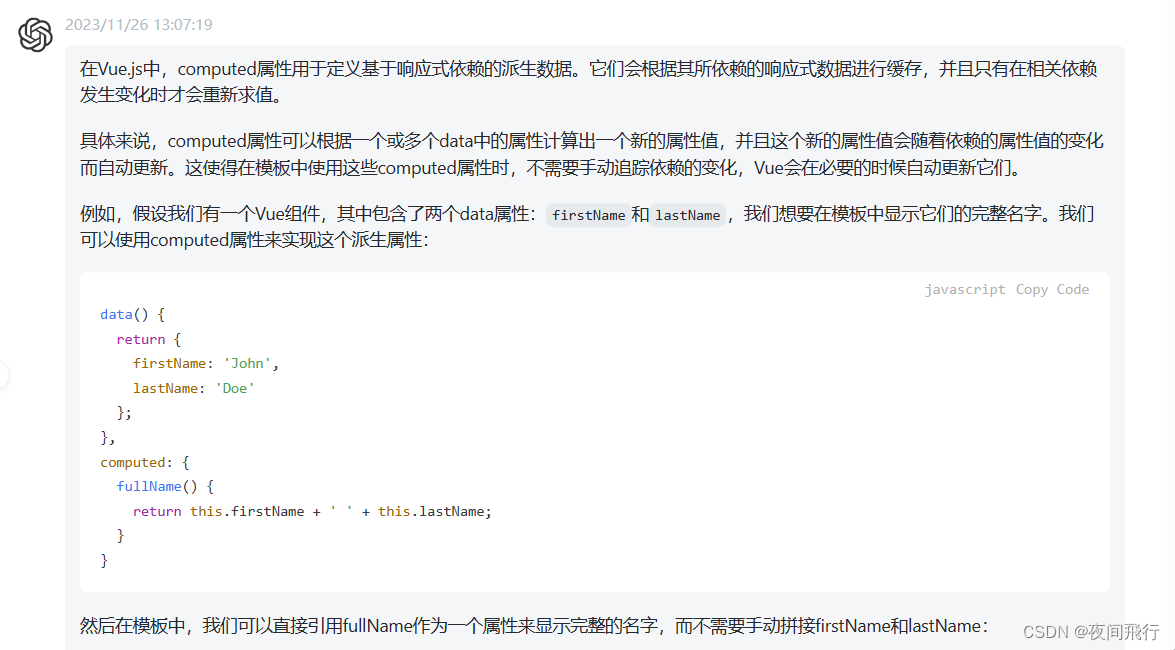
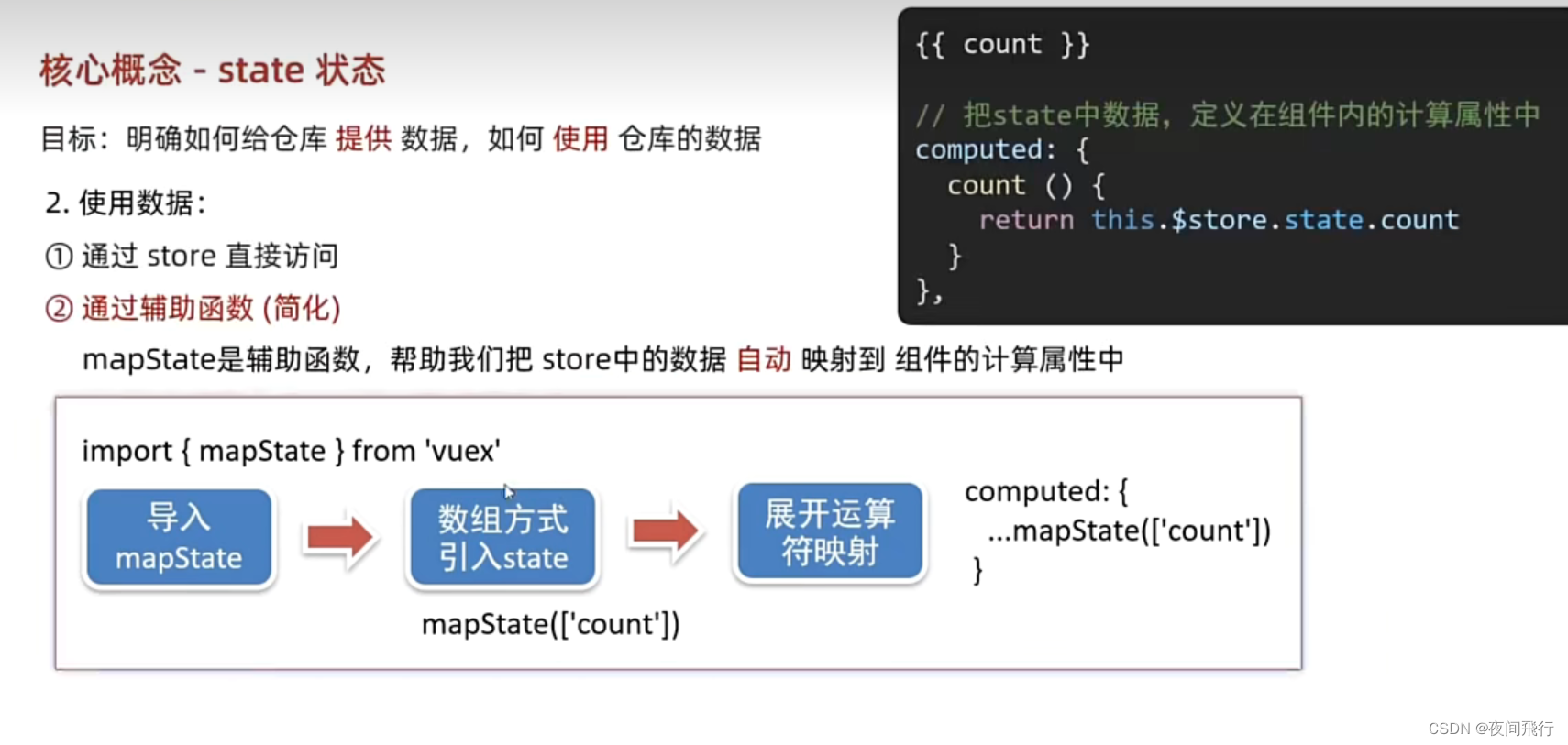 案列:
案列:
...manstate的作用就是将数组内的值全挂载到computed中

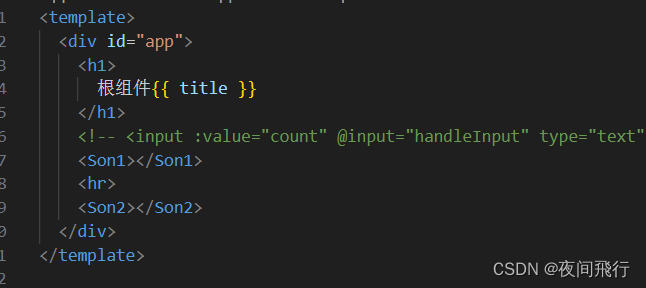
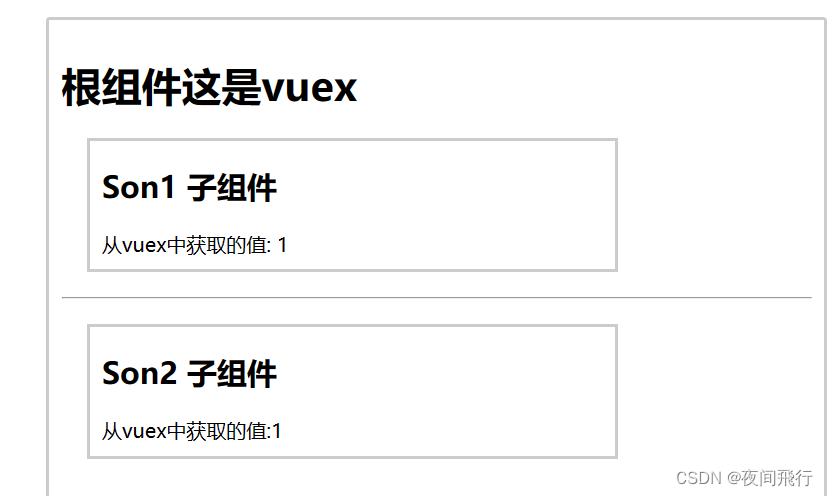
2.mutations的使用
1.介绍
store的数据也是下行数据,使用数据的组件不能直接对数据进行修改。要完成修改需要通过mutations进行修改。
2.案列:
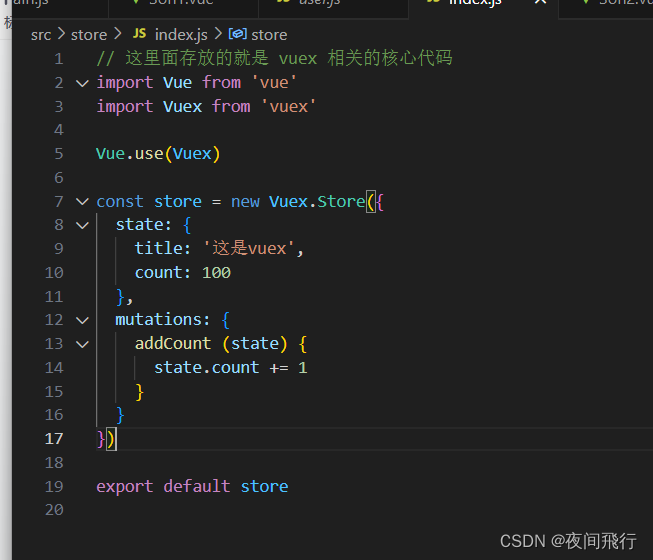

结果:
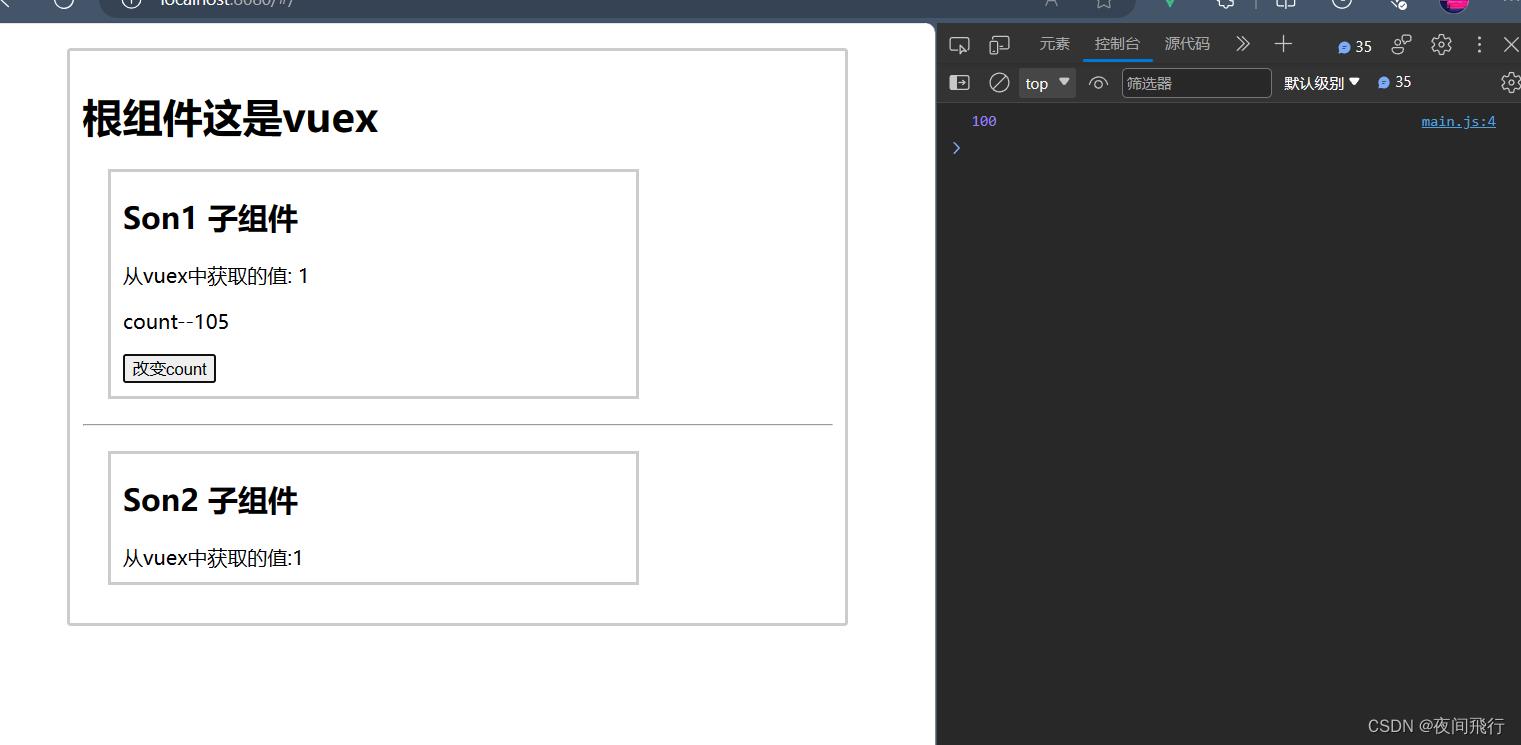
3.传参

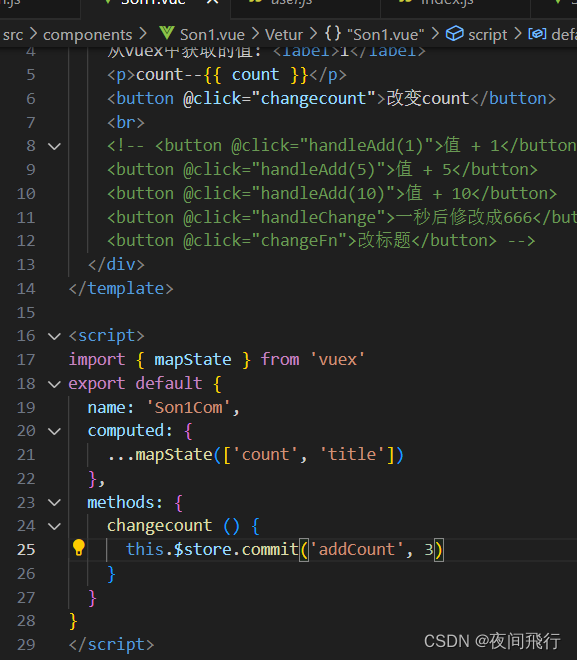
传参的时候,只能接受一个数据的输入,所以在输入多个数据的时候要把它们打包为一个对象。


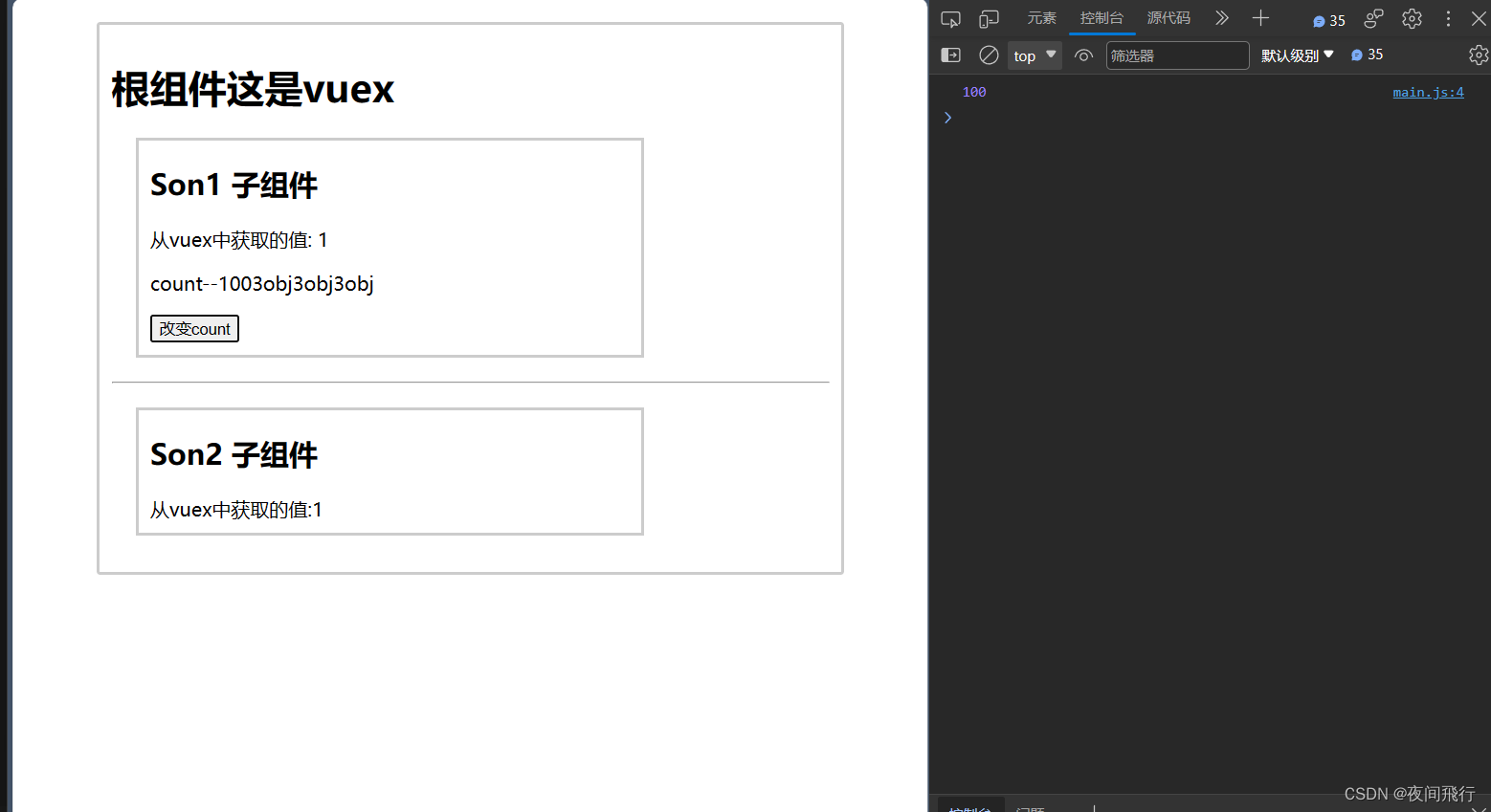
数据的双向绑定
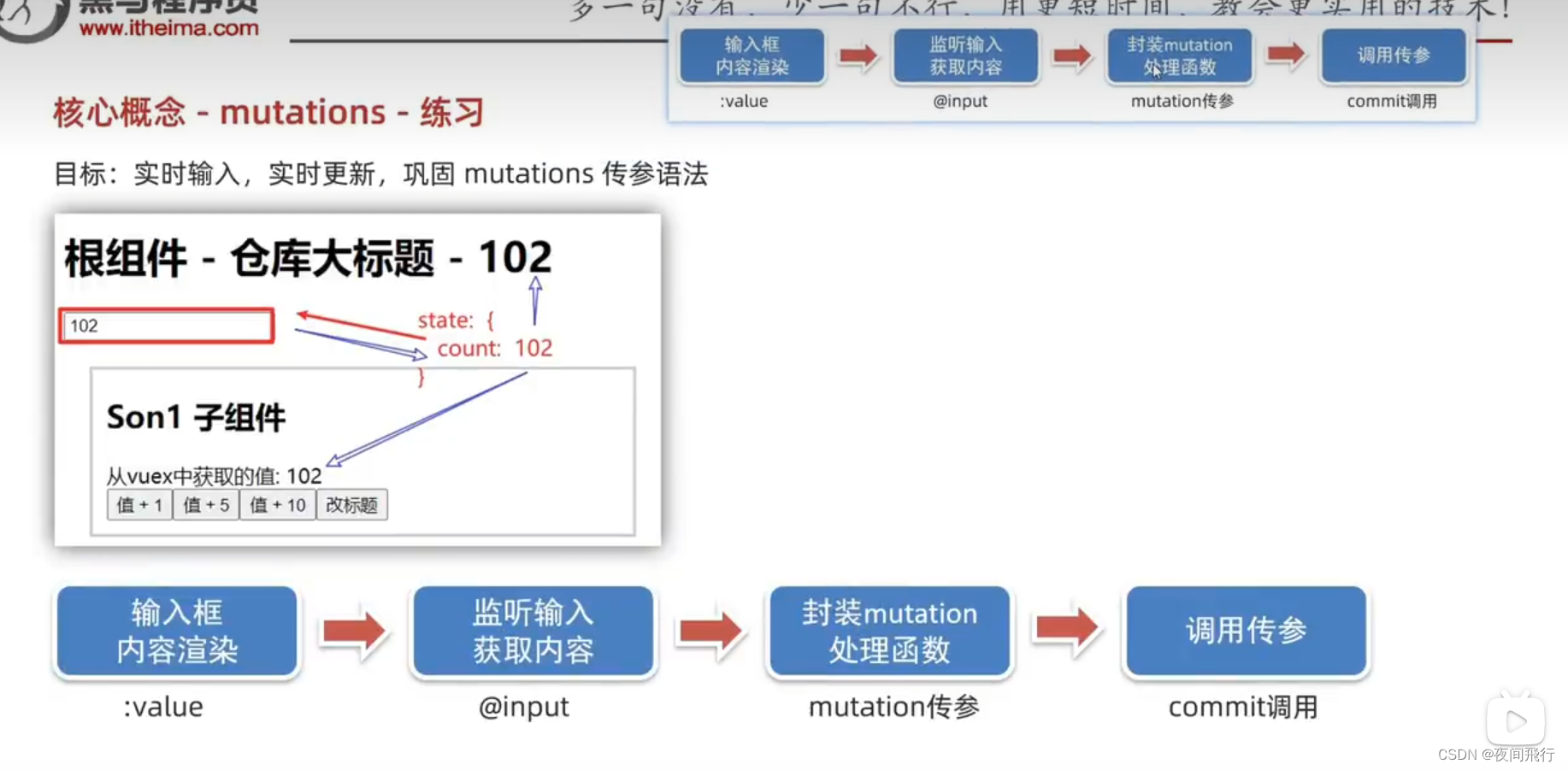
案列:
通过input改变,当方生变化时通知vuex变化。

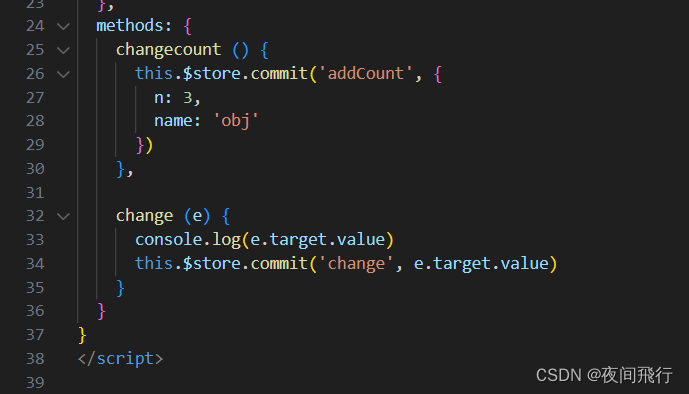

4.辅助函数mapMutations:

actions与gettrs的用法
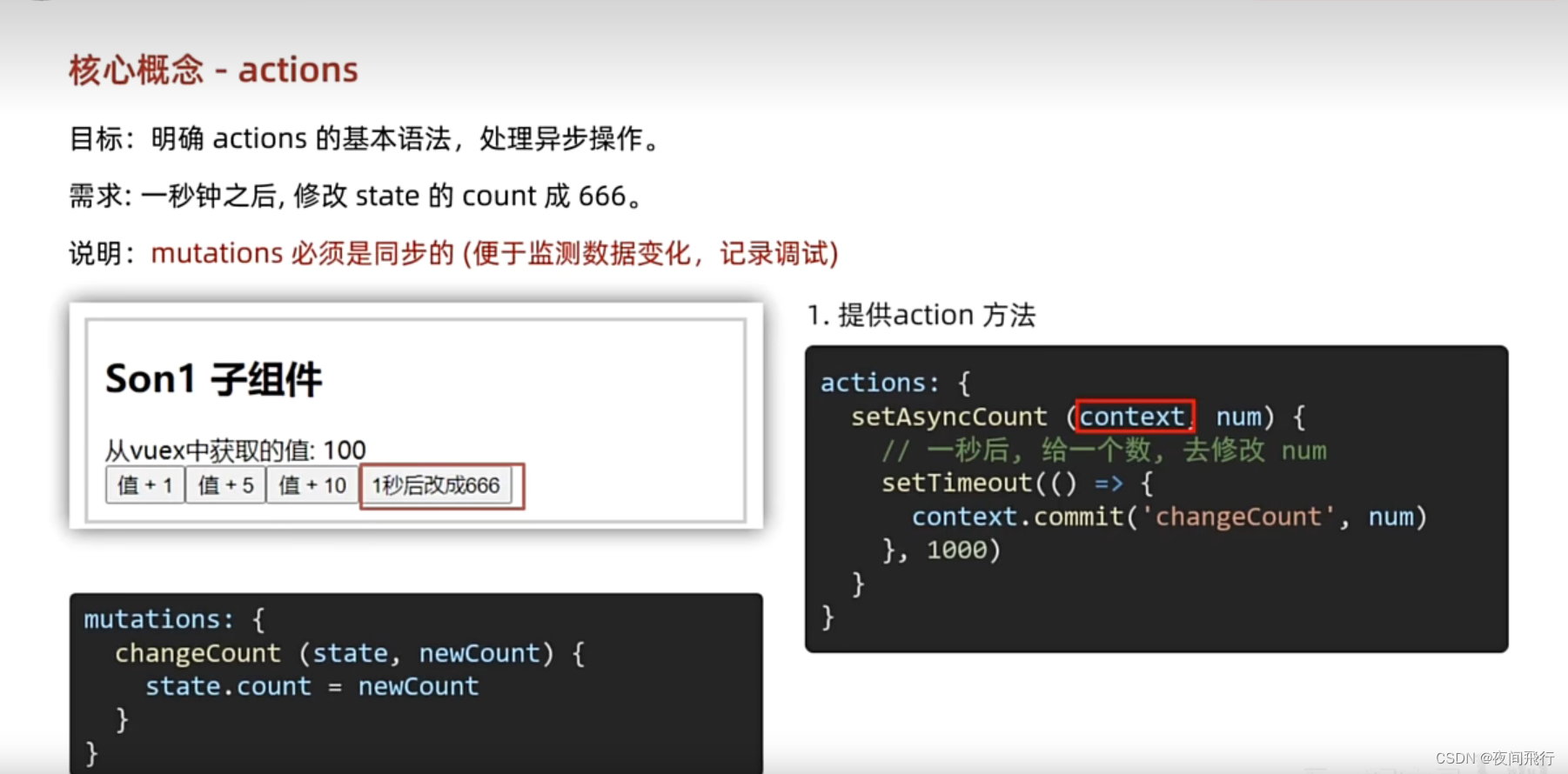


3.module分对象的写法
介绍
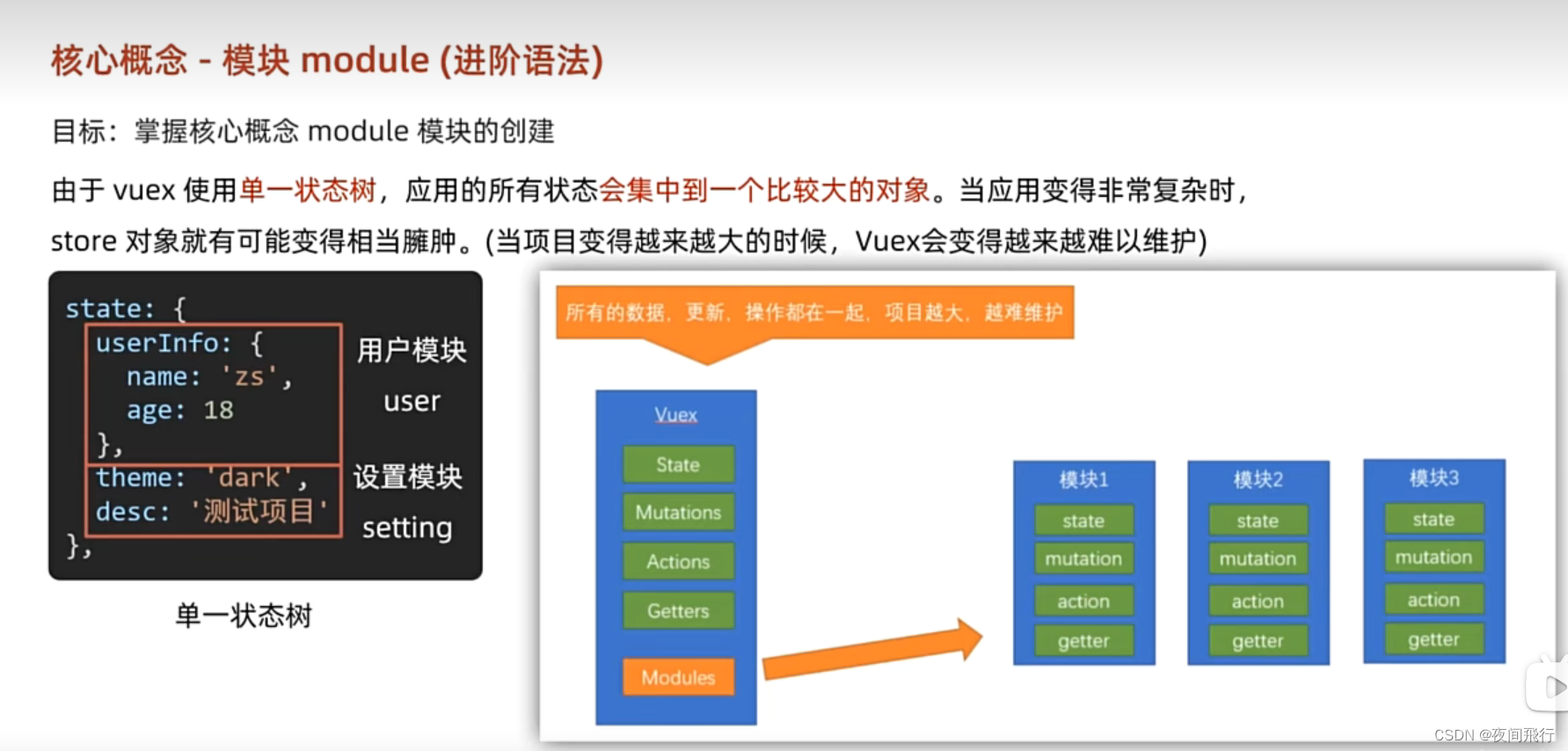
建立模块:
模块文件建立
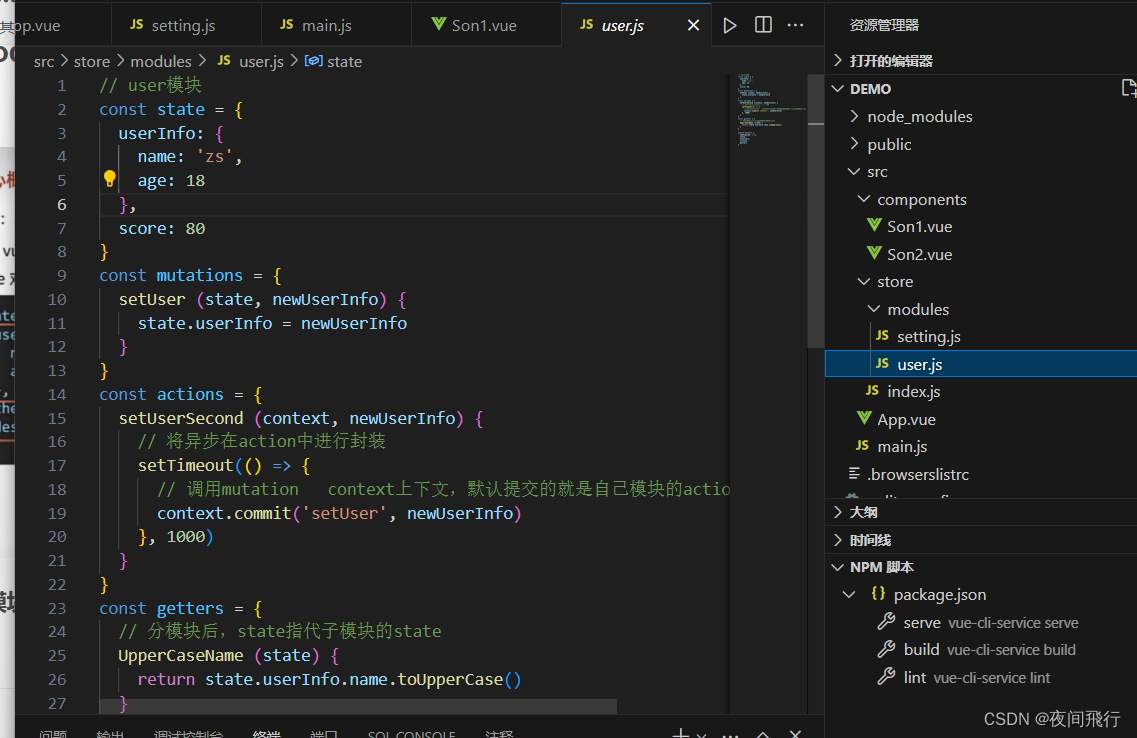
// user模块
const state = {userInfo: {name: 'zs',age: 18},score: 80
}
const mutations = {setUser (state, newUserInfo) {state.userInfo = newUserInfo}
}
const actions = {setUserSecond (context, newUserInfo) {// 将异步在action中进行封装setTimeout(() => {// 调用mutation context上下文,默认提交的就是自己模块的action和mutationcontext.commit('setUser', newUserInfo)}, 1000)}
}
const getters = {// 分模块后,state指代子模块的stateUpperCaseName (state) {return state.userInfo.name.toUpperCase()}
}export default {namespaced: true,state,mutations,actions,getters
}
index中配置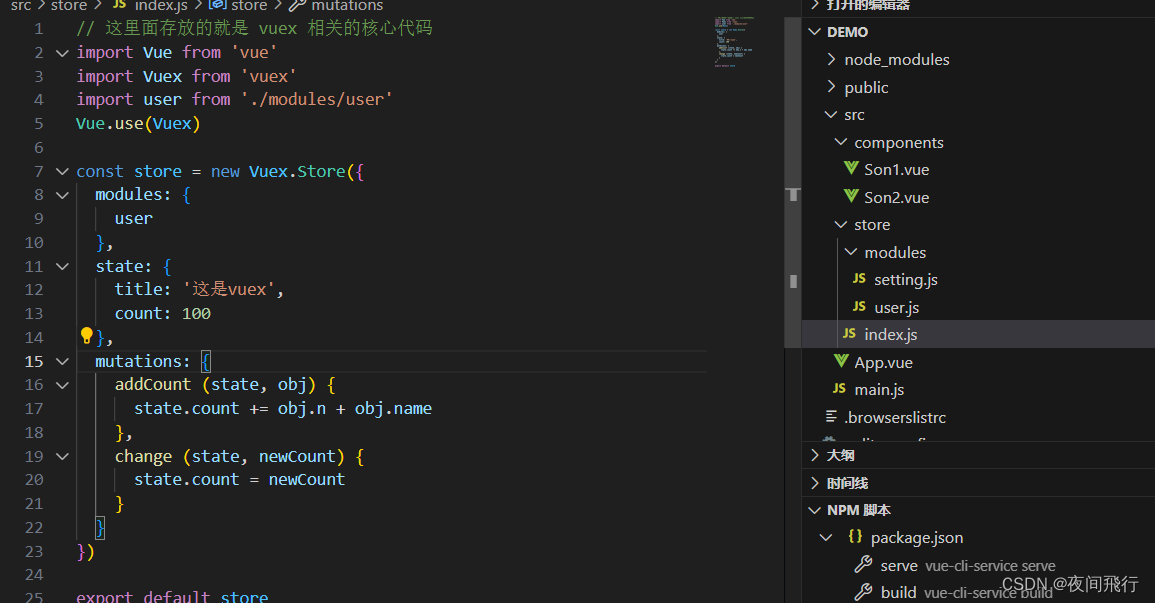
son1直接访问

访问数据的方式:
介绍
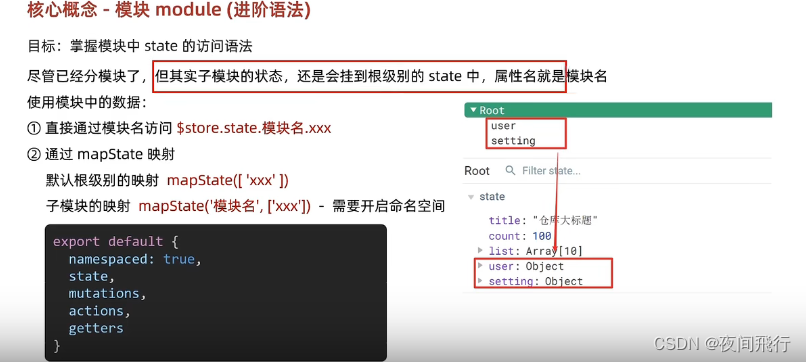
直接访问

案列:
右下角可以看到root中包括的数据,其中处于一级的是可以直接引入的。user,title。

将user已对象的形式引入

访问值

模块导入访问
23行导入user模块,再导入其内部的数据

添加标记namespace等于true
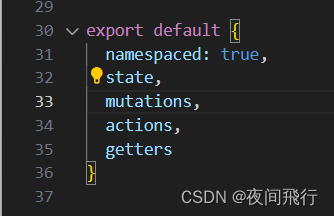
关于getters/setter
直接访问与state并不一样


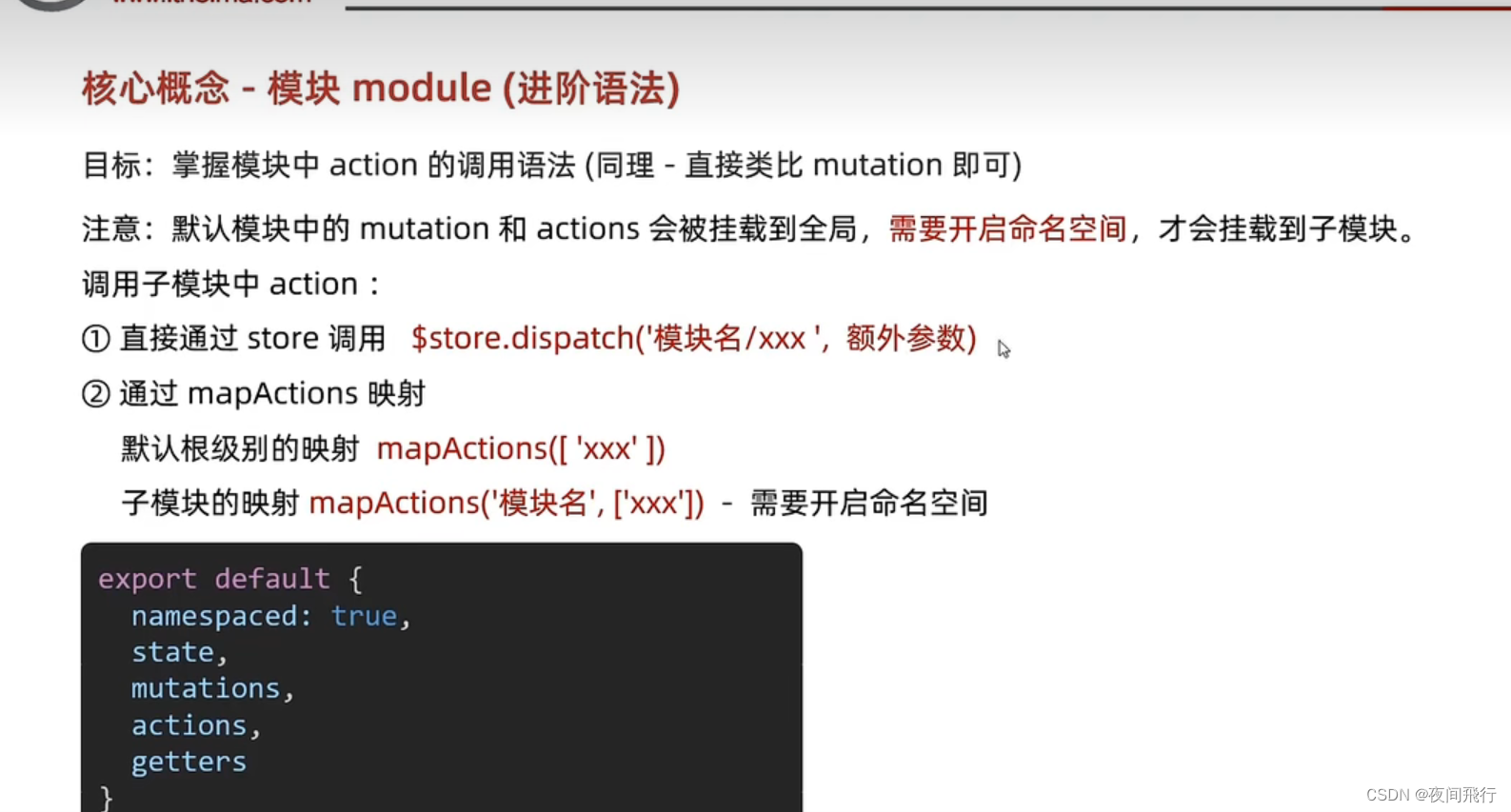
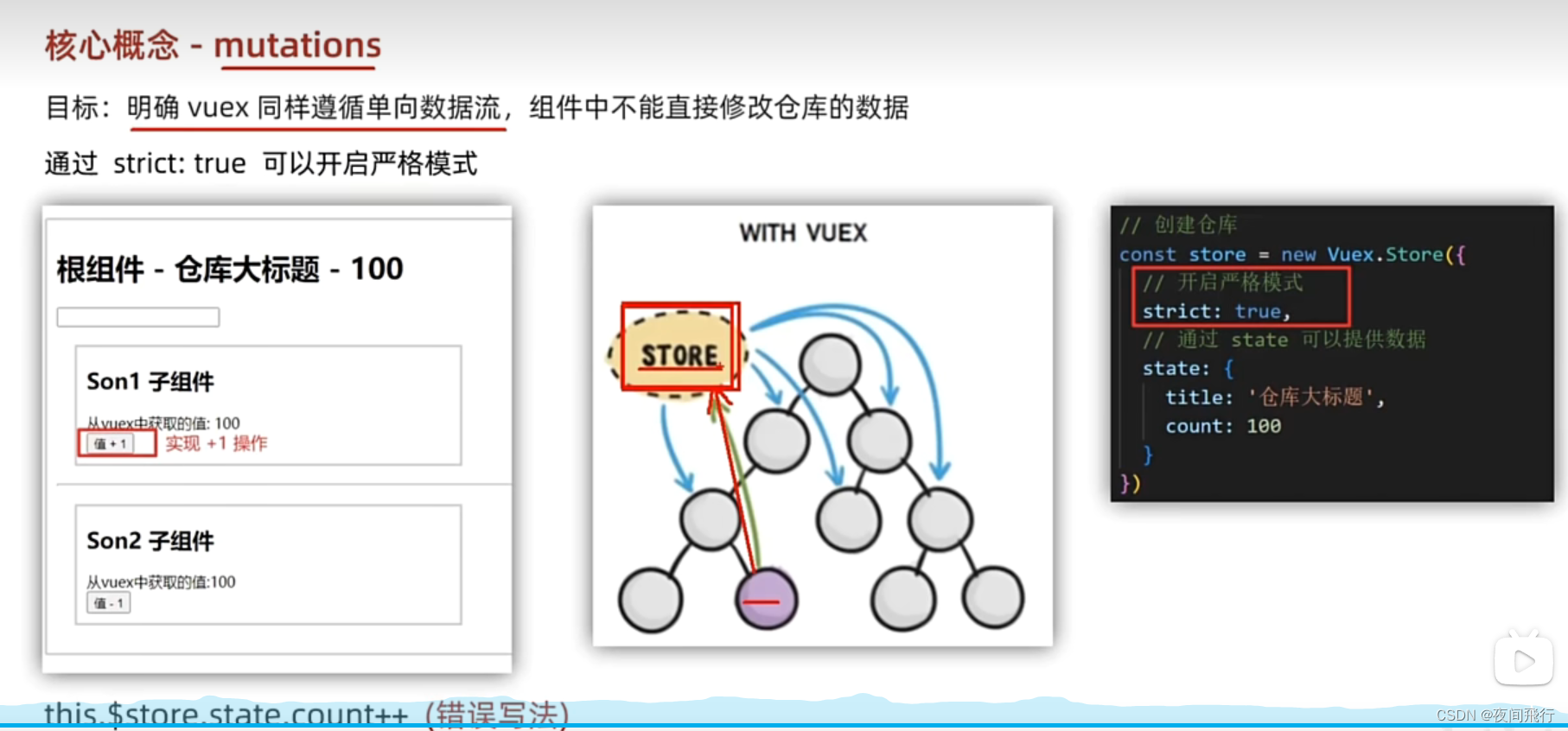


![[RK-Linux] recovery分区详解(二)](http://pic.xiahunao.cn/[RK-Linux] recovery分区详解(二))

,要求利用原单链表中结点空间设计出三个单链表的算法,使每个单链表只包含同类字符。)
)


?)

真题解析)







:iced中如何添加菜单栏(串口调试助手))